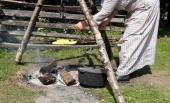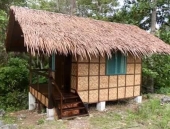After discovering the diverse array of uses for wood ash I've lived 33 years not knowing, I had to share my list. Please feel free to add to it!
It's exciting to be in the information age, where I can connect with my ancestry of Danish, Northern German, & unknown, in unexpected ways -the internet! (since my family doesn't talk about our traditional heritage)
It's looking like ash was a magic ingredient in the recipe for life back in the day, probably even less than two generations ago.
I'm curious to try some of these uses, and explore uses for other types of ash too. Please comment if you know of any uses for ash from other materials.
Pest Control:
There are tons of ways to use ash for pest control. One way is to control the numbers within your garden area, and regularly apply a border of ash around the perimeter. They don't like to cross it if it touches them.
Path Making/ Weed Control:
You can apply it a little heavier in areas you don't want anything to grow, but careful not to put too much because it can leach (especially downhill) through the soil or runoff onto plants that you do want to grow.
Potash:
Boil down the ash to make potash. It makes a good source of phosphorous, magnesium, aluminum, potassium, and calcium. Use very lightly (like a spice or seasoning) onto soil or compost pile. May need to rebalance the pH with acidic ingredients for certain plants.
Fertilizer:
Adding urine to the ash to balance the pH, or add urine to the bed or compost pile where ash has been spread. Dilute the urine with water if you are planting into the bed soon. Tomatoes love wood ash and urine.
Natural Building:
An ingredient in cob, adobe, or plasters as a binding and strengthening agent, similar to the properties of concrete. Adding wood ash to lime mortar makes it harder and more waterproof.
Mild Leavening Agent in Baking:
One teaspoon of ash water should have the same leavening power as about 1/46 teaspoon of baking soda. You could make Pearlash for a stronger version.
https://www.historyquester.com/potash-pearlash-and-pancakes/
Hide Tanning:
Wood ash and urine are used in the tanning process of hides - to strip the hair and soften the leather.
Cleaning Agent, Degreaser, Polisher:
Mix ash with water and it becomes an abrasive degreaser cleaning scrub like fast orange, but careful bc it strips the oil from your skin with direct contact. Polishes glass and metals.
Dessicant/ Moisture & Odor Control:
Absorbs moisture and smells from the environment it is kept in
Other Uses:
Food Preservation
Seed Preservation
Soap Making
Tire Traction in Ice & Snow
~Marlo Blythe





